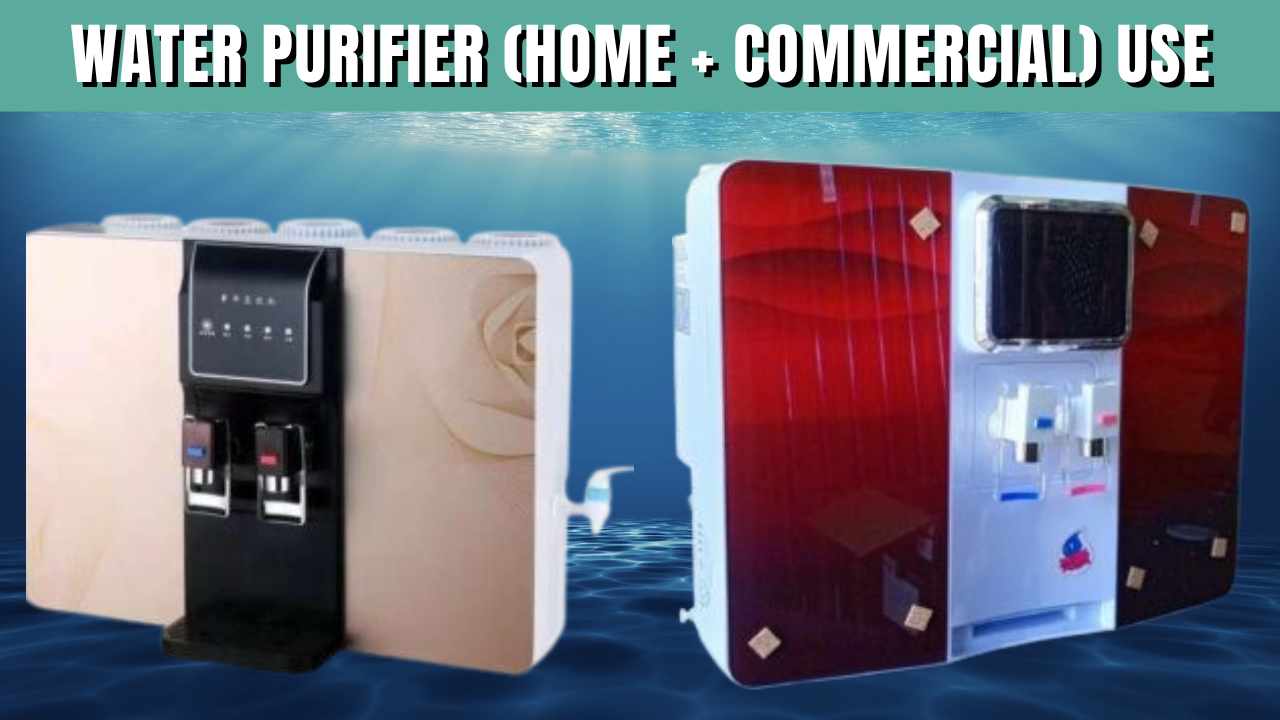Your cart is currently empty!

Water purifier machine for tap water
A water purifier machine is a machine that removes organic and inorganic substances, unpleasant chemicals as well as biological contaminants present in the water so that the water is safe and clean for use. This machine uses one or more methods of purification to treat the water. Lets fast explore general knowledge on water purification methods;
Methods of water purification
There are three water purification methods which include reverse osmosis, distillation and ultraviolet (UV). The method used by a water purifier determines the type of the water purifier. Below is a breakdown of how these water purification methods work.
water purification through Reverse Osmosis (RO)
Reverse osmosis is the most popular water purification method. A water purifier that uses reverse osmosis pushes high pressure water through a semipermeable membrane which allows clean water to pass through while blocking undesirable impurities such as dissolved solutes. This method of filtration using a semipermeable membrane is regarded as one of the most effective water purification methods. Reverse osmosis is increasingly being used in water treatment plants for water purification.
Ultraviolet (UV) water purification
A water purifier machine that utilizes UV light in water purification purifies the water by damaging and killing microorganisms using the UV light. These microorganisms include viruses, bacteria and parasites present in the water. During water purification UV light penetrates through microorganisms cell walls and either kills them or damages their DNA hence inactivating them making them unable to reproduce. The use of UV light in water purification only kills microorganisms and does not remove other impurities. Consequently, a UV light water purifier is most effective when coupled with an additional water purification system.
Water purification by distillation
Water purification through distillation involves boiling the water to separate impurities from clean water. During this process water boils until it evaporates into steam leaving impurities behind. A water purifier that employs distillation collects the formed steam and condenses it into liquid water. This water is usually safe for drinking and use for other purposes. Distillation through high boiling point removes minerals, harmful chemicals and microorganisms from the water. However, the process fails to remove organic compounds that can evaporate. Therefore, it is advisable to incorporate additional filtration mechanisms into the systems before using them.
Why you need a water purifier at home
- Using a water purifier machine to purify your tap water is more economical compared to purchasing bottled water – most people are uncomfortable with drinking tap water because of contaminants present in it. They end up purchasing bottled water as it is considered safe for drinking. A water purifier enables you to purify your tap water which is cheaper and makes it clean for drinking.
- A water purifier improves tap water’s taste and odor – most of the complaints about tap water revolve around taste and odor. Most people complain that the water contains a chlorine taste and the smell of hydrogen sulfide. A water purifier does you good by removing any taste, color and odor that may cause discomfort while drinking.
- A water purifier helps to protect your health – available drinking water is not safe for one’s health as it contains bacteria and viruses that cause serious health issues and diseases. Drinking this water is therefore harmful to your health. A water purifier removes contaminants such as microorganisms including bacteria and parasites from the water making it safe for drinking.
- Owning a water purifier reduces the amount of plastic in the environment – drinking tap water is much more eco-friendly compared to bottled water. Using a water purifier to remove contaminants from the tap water and make it safe for dring enables you to avoid purchasing bottled water. This helps to remove the amount of plastics and protect the environment.